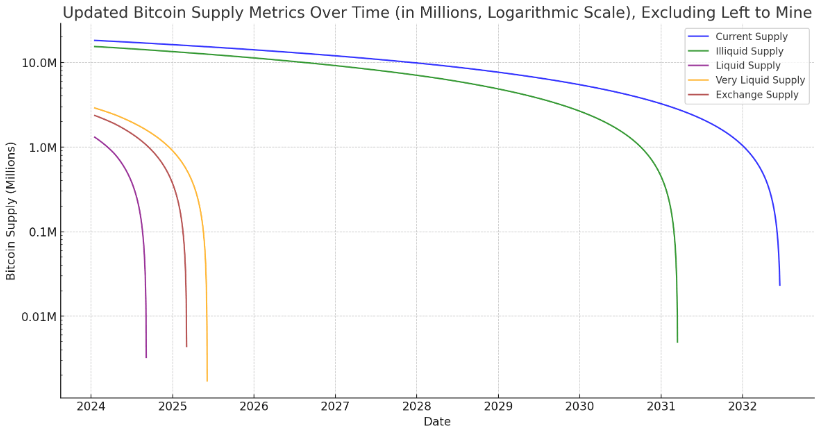Seeds of change: How emerging tech cultivates a sustainable revolution in agriculture
At the forefront of this intersection lies the transformative potential of blockchain technology to make environmental commitments and claims more verifiably binding — a dynamic synergy that holds the key to revolutionizing the way we perceive and manage real-world assets within agricultural sectors.
As the world begins to finally confront the urgent need to tackle climate change, governments and regulators are now seeing that investment in modern technology systems is an imperative element of the global fight against emissions. Many of the traditional approaches that have governed sustainability measures, commitments, and pledges in the past have proven to be not fit for purpose, and have been riddled with deficits in transparency, efficiency, verifiability, and, most importantly, trust.
A case in point for some of these issues is the Canadian government’s recent imposition of an environmental tax agenda on major oil companies, a policy intended to curb ecological impacts by raising market prices.
This tax has proven less than practical as it goes far beyond impacting just oil companies, as the tax applies to anywhere oil and gas are used. For example, take the effect on farmers – this tax impacts them on every front, from fueling tractors, heating barns, and transporting produce. As a result, food prices are soaring through the roof, and the burden is disproportionately borne by consumers struggling to put food on the table.
While the government’s ambition may have been noble and motivated by a desire to tackle emissions, the measures have been ineffective and again highlighted the need for more practical and deliverable solutions.
Deficits in the traditional approach can begin to be tackled by harnessing modern technology, like blockchain, to implement modern and verifiable measuring practices that will in turn, incentivize and reward genuinely sustainable practices. The importance of moving to a more verifiable and trustworthy measuring system becomes clear when we see the pledges made at last year’s COP28 conference in the UAE.
While grand pronouncements were plentiful, it is now vital that we see concrete climate action and incentives for eco-friendly practices delivered upon, to truly achieve significant reductions in greenhouse gas emissions. Moving to a more modern measuring process has the added benefit of also providing near real-time progress reports on climate pledges, again encouraging and rewarding sustainable practices at a community level.
Bringing Everyone with Us – More Effective Regulation
Deforestation accounts for around 11% of global carbon emissions — a statistic that dominated conversations at COP28 last year. 2024 is a potential turning point in this sphere as the EU’s new anti-deforestation law, EUDR, comes into force, requiring proof that goods like coffee, soya, and cocoa have not been produced on land that has been subject to deforestation if they are to be imported into the EU.
While climate activists have welcomed this move, it is also fair to question how farmers in the Global South can be expected to survive and comply with the EUDR, without significant assistance. For example, at least 70% of the world’s cocoa beans are produced in West African countries such as Ghana, Nigeria, and Cameroon and further processed and distributed through Europe.
Now, EU regulations will prohibit farmers from exporting to lucrative markets unless they can prove that their produce has come from deforestation-free land – being able to confirm this is a significant challenge, especially when you consider the relatively rudimentary monitoring processes that currently exist across smaller farms in the Global South.
A Technological Transformation
New, easily accessible technology can help smallholder farmers on this journey.
Aerial photography and AI make it feasible for farmers to accurately differentiate between crops cultivated and grown in areas affected by deforestation. Advanced machine learning allows for seamless monitoring of farm activities – offering farmers actionable insights based on real-time information.
Tying all this together, blockchain integration provides a transparent, secure, and verifiable record of a product’s history – these records provide a record of truth, which can’t be altered once it’s written to the blockchain. This immutable characteristic is vital to traceability processes throughout the supply chain, opening up new possibilities for farmers and allowing them to comply with the EUDR and other regulations.
The best part is that these technologies are also now more accessible than ever before via creative mobile applications that reach farmers who may previously have had no exposure to AgTech of any kind.
This combination of new technological elements empowers farmers to access markets by complying with regulations, optimizing crop yields, and minimizing environmental impacts. This opens up many new opportunities for smallholder farmers and supports more sustainable and environmentally friendly farming practices.
Highlighting these new technological opportunities and making them easily accessible is vital to drive more sustainable farming practices and, ultimately, a more environmentally sustainable future.



